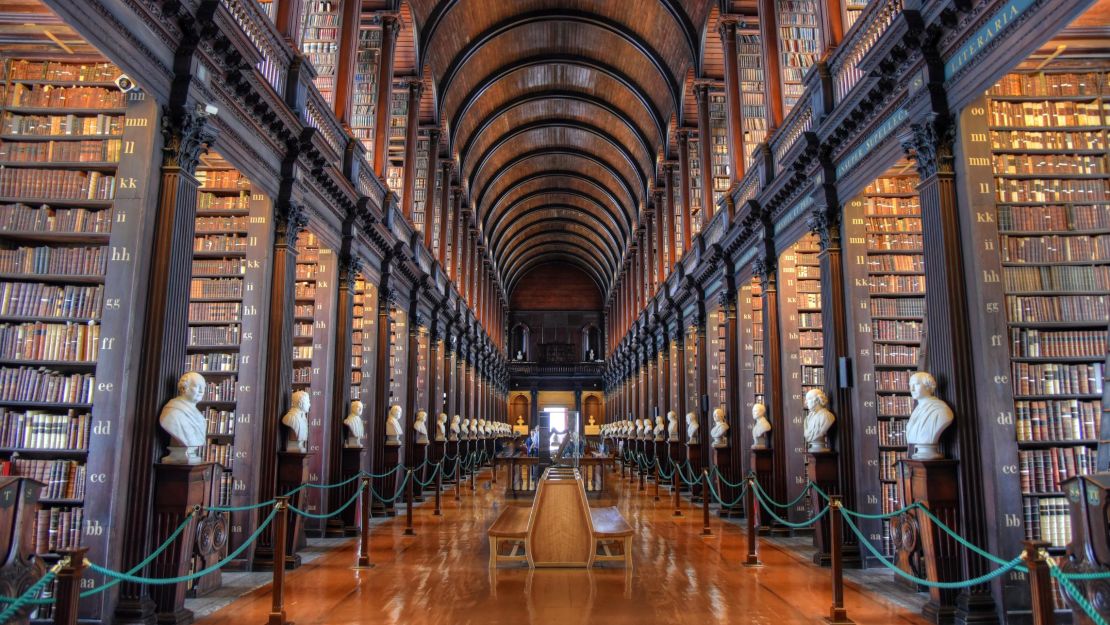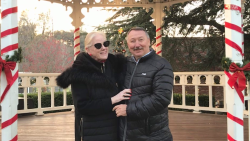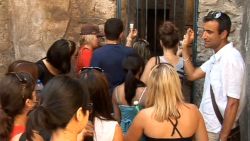When you travel to Dublin, it doesn’t take too long to figure out this is not the capital of a former far-flung empire like that of London, Madrid or Rome.
While it lacks massive buildings and old monuments to past imperial grandeur, Dublin overflows with friendly, accessible charm in more human-scaled surroundings. It’s truly one of the great destinations of Europe, if not the world.
Dublin is one of Europe’s smaller capital cities, with just over half a million people, but it has an outsized number of places to see. In no particular order, here’s a decent sampling of the great attractions that await when you come to Dublin to play:
What to see when you're in Dublin
National Gallery of Ireland
Ireland is a country known for its literary contributions, but don’t overlook its contributions to the artistic world, many of which are housed here in the National Gallery. It houses a number of works by Rembrandt, Goya and Monet.
The collection’s 15,000 Irish and European works date from the 13th to mid-20th centuries and include paintings, prints and national portraits.
Particularly prized is the Yeats Collection, comprising works and other materials related to Irish painter Jack B. Yeats, brother of poet and playwright W.B. Yeats.
National Gallery of Ireland, Merrion Square West, Dublin 2 Ireland; +353 1 661 5133
Old Jameson Distillery
The story of the Old Jameson Distillery goes back to 1780 and really is a Dublin must. Instead of a do-it-yourself walkabout, this guided tour opens with a short, informative film and is conducted by guides who really know their stuff.
The tour covers the basics of whiskey distilling, but also gives you a foundation in what distinguishes Jameson, and it culminates with a free tasting.
Tip: Stand near the front of the group and act quickly when the guide asks for volunteers – you’ll be treated to an extended tasting at the end.
Old Jameson Distillery, Bow Street Smithfield Village, Dublin 7 Ireland; +353 1 807 2355
Ha’penny Bridge
This modest cast-iron bridge over the River Liffey has become the symbol of Dublin, with its ornate design and quaint lampposts. The Ha’penny Bridge is so named for the toll of one halfpenny originally charged to cross it.
Before it was a tourist attraction, the Ha’Penny Bridge was a welcome addition for working folks. When it was built in 1816, the Ha’penny Bridge was the first iron bridge across the Liffey. Before its construction, most pedestrians had to ferry across the river.
Ha’penny Bridge, Bachelors Walk Wellington Quay, Dublin 1 Ireland
Dublin Castle

You’re in Europe. It’s hard to resist a good castle. And you have one right in the heart of Dublin. And like all good castles, it has a storied history – from its start in the 1200s on the site of a Viking settlement to 1922, when it was handed over to the new Irish government after independence from the United Kingdom.
A fire in 1684 damaged a good bit of the medieval castle, and in reconstruction, parts of it took on the look of a Georgian palace, making for an interesting mix of styles today.
It’s open seven days a week for tours, but be sure to check the website just in case it’s closed for government business.
Dublin Castle, Dublin Castle, Dame St, Dublin 2, Ireland; +353 1 645 8813
St. Stephen’s Green
Though you’ll have chances to see so many beautiful shades of green throughout Ireland, don’t pass up the chance to enjoy the green of this park in the heart of Dublin.
A treasured part of the city for centuries, the park has important sculptures of major figures in Irish history as well as exquisitely maintained Victorian grounds in the center. Sycamores and other trees line the perimeter to help buffer city noise, and it’s a haven for birds as well as people. Look for robins, wrens, magpies and even birds of prey.
It’s open all year – even Christmas Day. And it’s a very easy walk from the National Gallery.
St. Stephen’s Green, Main entrance is through the Fusiliers’ Arch, at the top of Grafton Street.
St. Patrick’s Cathedral
St. Patrick’s is the National Cathedral of the Church of Ireland. You can come here as an observational tourist, or you can attend a worship service as well.
It’s believed St. Patrick himself baptized people on the site of the church around 445. Construction of the current cathedral began in the 1200s, and it had a major renovation in the 1800s. The building has withstood wind storms, fire and tumultuous times. You can admire the Gothic workmanship and visit the tomb of “Gulliver’s Travels” author Jonathan Swift.
As with many sites of this type, you might want to come early in the morning and soak in the atmosphere in relative peace before the crowds arrive.
St. Patrick’s Cathedral, St Patrick’s Close, Wood Quay, Dublin 8, DZ08 H6X3, Ireland; + 353 1 453 9472
Jeanie Johnston ship
One of the most devastating periods in Irish history was the Great Famine of the 1840s. A potato blight caused widespread starvation and economic ruin. Ireland’s population of 8.4 million in 1844 had fallen to 6.6 million by 1851. Even today, the country has never returned to its pre-blight numbers. Many Irish fled to the New World.
The Jeanie Johnston was one of the ships sailing the Atlantic to take people to new lives. It made its maiden voyage on April 24, 1848, from Ireland to Quebec, Canada, with 193 passengers. Over the next seven years, 15 more voyages were made – with no loss of life.
Today, visitors can board the restored ship and see the difficult conditions under which these emigrants sailed. The tour runs a little under an hour.
Jeanie Johnston, Custom House Quay, Dublin 1; +353 1 473 0111
Trinity College Library

A must-stop for any first-timer to Dublin, Trinity College is the equivalent of Ireland’s Ivy League university. Its Old Library is truly a sight to behold: stacks upon stacks of teetering ancient wooden bookshelves that seem to go on and up for miles.
Admission includes a visit to the Book of Kells, an ornate manuscript of the Gospels, which Celtic monks decorated by hand in the ninth century.
Trinity College Library Dublin, College St., Dublin 2 Ireland; +1 353 896 1127
Natural History Museum
This museum opened in 1857 and has been educating visitors about the natural world ever since.
On the ground floor, the Irish room is dedicated to mammals, birds, fish and insects native to the island. And in other exhibits, you’ll find stuffed creatures of the not-so-native kind: an elephant, a polar bear and lions, among others. The museum has a reading room if you wish to learn more.
To avoid weekend crowds, the museum advises coming Tuesday through Friday. It’s closed on Mondays.
Natural History Museum, Merrion St Upper, Dublin 2, Ireland; +353 1 677 7444
Dublin Writers Museum
Ireland’s contributions to the literary world are remembered in this modest but appealing museum.
The Dublin Writers Museum covers three centuries of Irish literature, with exhibitions showcasing the life, works, materials and personal items of some of the country’s literary icons, from W.B. Yeats to Frank McCourt.
Dublin Writers Museum, 18-19 Parnell Square North, Dublin 1 Ireland; +353 1 872 2077
Guinness Storehouse
You know the name. You may have enjoyed the beverage a time or two. Now it’s time to see how the Guinness magic happens.
Through seven floors, you’ll learn about the rich history of Guinness and brewing in Ireland, and at the top, you’ll taste for yourself the dark stout that’s come to delight not just Ireland but the world. Fun fact: Did you know that Nigeria is actually the biggest market for Guinness?
There are also restaurants on site so you’re not sampling on an empty stomach.
Guinness Storehouse, St. James’s Gate, Ushers, Dublin 8, Ireland: +353 1 408 4800
Grafton Street
Here you’ll find shopping and people-watching.
Dublin’s main shopping area runs right through the city center, south of the River Liffey. A pedestrian-only zone during business hours, Grafton Street owes much of its lovely ambiance to the red brick with which it was paved.
Stretching for several “blocks” – if Dublin had such things – Grafton Street is the Irish equivalent of a British high street, boasting many international and local stores and the famed Irish department store Brown Thomas, in case you’ve a hankering for Chanel or Gucci.
At the south end, the Stephen’s Green Shopping Centre is a beautiful wrought iron Victorian shopping arcade home to even more well-known brands.
Keep in mind it can be incredibly crowded with shoppers, especially on a Saturday.
Directions: Start at Fusilier’s Arch at St. Stephen’s Green and work your way up
Drury Street
For eating, drinking, shopping and ambling, skip the tourist-heavy Temple Bar area and center yourself around Drury Street, a few streets west of Grafton Street.
You can browse the quirky shops and stalls in George’s Street Arcade, pick up some classy souvenirs at the Irish Design Shop and Industry and Co, then stop for refreshments at Kaph or Blazing Salads.
Venerable drinking spots such as The Hairy Lemon, Grogans, The Long Hall and the Central Hotel’s Library Bar are all within stumbling distance, as well as younger upstarts such as Fade Street Social.
Directions: Start at the junction with Wicklow Street and work your way up
The Gutter Bookshop
As many of the little, independent bookshops have died out in Dublin, the Gutter has remained a stalwart little light of bookish goodness in the Temple Bar.
Although decidedly neater, tidier and cuter than you’d expect a boho bookshop to be, the Gutter is stocked with a hearty selection of books (including, naturally, a wonderful section by Irish authors), as well as staff who’ve actually read them. The Gutter also offers a regular lineup of activities, including reading groups, book launches and quirky cultural to-dos.
The Gutter Bookshop, Cow’s Lane Temple Bar, Dublin Ireland; +353 1 679 9206
Megan Eaves contributed to this article from previously published material, and CNN’s Forrest Brown contributed new material.


























